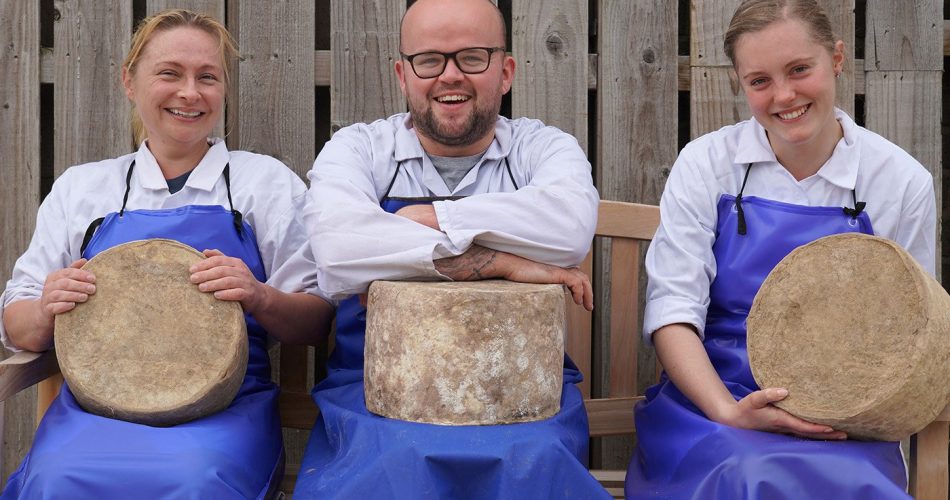Why Floridia Cheese Thomastown Is a Masterpiece in Melbourne Made Cheese
Why Floridia Cheese Thomastown Is a Masterpiece in Melbourne Made Cheese
Blog Article
Unlocking the Tricks of Artisanal Cheese Making: A Detailed DIY Overview
In the world of cooking workmanship, artisanal cheese making stands as a testimony to the delicate balance in between practice and advancement. Each action in the process, from picking the right milk to perfecting aging strategies, holds within it a wealth of understanding gave via generations. As we start this journey to demystify the art of creating elegant cheeses, we are confronted with a tapestry of tricks and abilities waiting to be untangled. Join us as we discover the complexities of this ancient craft, where art, patience, and scientific research assemble to create flavors that tantalize the senses.
Choosing the Right Milk
When beginning on the journey of artisanal cheese production, the choice of milk plays a critical function in identifying the top quality and features of the last item. The kind of milk picked impacts the taste, structure, and on the whole account of the cheese.
When choosing milk for cheese production, it is crucial to consider the fat material. Higher fat material in milk can cause a creamier and richer cheese, while lower fat web content may cause a drier and firmer structure. Additionally, the source of the milk, whether from cows, goats, sheep, or buffalo, adds distinct tastes and characteristics to celebrity (Floridia Cheese Thomastown). Each sort of milk brings its very own nuances, permitting a vast array of cheese ranges to be crafted based upon the chosen milk. Eventually, the choice of milk is a fundamental decision that sets the structure for an effective artisanal cheese-making endeavor.
Culturing and Coagulating
To start the cheese-making process, the vital steps of culturing and coagulating need to be very carefully implemented to change milk right into curds and whey. The kind of society used can significantly influence the taste, appearance, and ripening of the final cheese product.

The timing and temperature level control during culturing and coagulation are vital elements that affect the final end result of celebrity. Proper implementation of these steps is necessary to ensure the preferred appearance, taste, and consistency of the artisanal cheese being generated.
Draining and Pressing Curds
After the milk proteins have actually coagulated and the curds have actually been cut to launch whey, the following vital step in artisanal cheese making entails draining pipes and pressing the curds to accomplish the wanted texture and consistency of the last cheese item. The time for draining can differ depending on the kind of cheese being made and the preferred wetness content.
As soon as the curds have actually sufficiently drained, the following action is pressing. Pressing assists get rid of any kind of remaining whey and compacts the curds to develop a strong cheese wheel. Pushing can be done making use of specialized cheese presses that use gentle and constant stress over a time period. The duration and pressure applied during pressing will certainly affect the last appearance of the cheese, from soft and creamy to difficult and company. Appropriate pushing and draining pipes are important steps that substantially influence the top quality and features of the artisanal cheese being produced.
Aging and Flavoring Techniques
Implementing meticulous aging and flavor techniques is critical in improving the depth and complexity of artisanal cheeses, elevating their preference accounts to elegant levels of improvement and elegance. Aging plays a vital function in creating the special flavors and appearances that differentiate artisanal cheeses. Throughout the aging process, cheeses are stored in thoroughly controlled settings where aspects such as temperature, air flow, and moisture are manipulated to motivate the growth of valuable molds and microorganisms. This regulated setting permits celebrity to grow slowly, creating intricate aromas and abundant flavors.
Seasoning methods additionally add substantially to the last preference of artisanal cheeses. Cheesemakers may select to present added tastes by integrating active ingredients such as natural herbs, flavors, or also fruits into the cheese during the manufacturing procedure. Furthermore, additional info some cheeses are cleaned or rubbed with different fluids, such as salt water or alcohol, to boost their structures and tastes.
Wrapping and Storing Cheeses

Conclusion
In final thought, understanding the art of artisanal cheese making entails thoroughly choosing the ideal milk, complying with specific culturing and coagulating procedures, draining pipes and pushing curds effectively, and utilizing different aging and flavoring methods. Keep in mind to cover and save your cheeses effectively to ensure optimal flavor and structure growth.
Each kind of milk brings its very own subtleties, permitting for a vast array of cheese selections to be crafted based on the picked milk.After the milk healthy proteins have actually coagulated and the curds have been cut to release whey, the next important step in artisanal cheese making includes draining and pressing the curds to achieve the desired texture and uniformity of the final cheese product. Most cheeses should be wrapped in wax paper or cheese paper to allow them to breathe while safeguarding them from drying out. For cheeses that need to continue aging, such as bloomy skins like this or washed rinds, ensure they are kept in a great atmosphere like a cheese cave or a refrigerator set to the ideal temperature level. By paying interest to the wrapping and storage of artisanal cheeses, cheese manufacturers and fanatics can maintain the integrity of these specials and completely enjoy their complex flavors.
Report this page